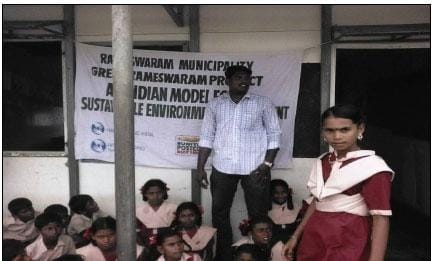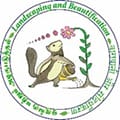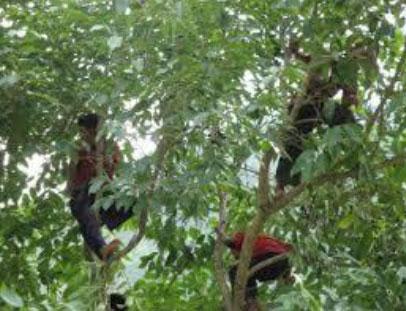July 2016
Newsletters

Rameshwaram, the anchor of Indian Renaissance 5
The western academia is at awe when they see the richness of Indian mythology and symbolism. A religion without a name, without a tag of only book, only god and only central authority is able to unite a vast population for centuries together and can survive shocks of severe viciousness and amplitude time and again. This is unthinkable for some of the western academia who has been celebrated in Indian studies. How one can explain the existence of four dhams, 12 Jyotirlingas and Shaktipithas across the entire geography of Indian soil? And people religiously doing pilgrimages of these sites every year?
Unfortunately, the indological research of the west is a long tale of disgusting and enraging misinterpretations of Indian Gods and symbols which started with the British rule. And so from the time of, say, William Jones, the research, narrative, and interpretation were, unsurprisingly, colonial in both colour and flavour. In other words Eurocentric.

Hand in Hand India
Events for the month of July 2016
Hand in Hand India uses different methodologies for training and awareness to spread the message of ‘Green Environment’ with special emphasis on Solid waste management. Hand in Hand team trains different stakeholders from time to time which helps in building the social capital which in turns ensures sustainability. During July the team organized awareness programmes for school students, youth groups and SHG members.


NAKSHATRA VANAM
The Indian Blackberry Tree
Syzygium cuminii is a medium-size evergreen tree 10-30 m high, with a straight to crooked, short, stout trunk, 40-100 cm in diameter, attaining a height of 13-20m. Crown is irregular or globular with many branches. Bark up to 2.5 cm thick, brown or dark grey. Leaves are entire with narrow transparent margin, long, broad, opposite, thick, coriaceous, glabrous, broadly obovate. Flower clusters on old twigs at the back of leaves, flowers white or pink, many, small. Fruits are ovoidoblong or elliptical berries, numerous, crowded in clusters.
The jamun fruit and jamun leaves are good for diabetes. The black plum has anti-diabetic features. The decoction of the bark is used as a mouthwash and to treat spongy gums. Jamun seeds are used as an effective agent to treat acne. The jamun fruit is loaded with sugars like glucose and fructose along with lesser calories. People suffering from anemia and jaundice should take jamun because of its high iron content and vitamin C. The juice extracted from the seed is taken to reduce sugar in urine. Chewing and eating of jamun leaves are good in treating diarrhea, ulcers and digestive related disorders.


Renovation of Traditional Water Bodies (TWB) in the Island of Rameshwaram
Narena Teertham was inaugurated on 25th July 2016. Hundreds of students and local people attended the sacred function at the Traditional water body and then the public function in a hall opposite to the Church. About 30 villagers from Thattankudiruppu where Vivekananda Kendra carried out the Renovation of Oorni work 22 years back also attended the programme. The programme started with a Ganapati Homam on site followed by Teertha puja (holy water). GKD Trust Coimbatore provided CSR funds for the Renovation of Narena teertham. Shri.N.R.Selvaraj, Director, Super Sales India Ltd., Coimbatore represented the GKD Trust was the chief guest. Tree plantation was carried out at site by Fr.Jesu Augustine, Shri.Allen James and the Chief guest Shri.N.R.Selvaraj. The public function started with a prayer by students of Vivekananda Vidyalaya at 10.45 a.m. Shri.Joseph Jeromias welcomed the gathering followed by the report of the work by Dr.Paran Gowda and Sis.Saraswathi. All the workers from Madurai who were instrumental in renovating the water body were felicitated by giving them a dhoti and a towel. The importance of water bodies and its preservation was highlighted by Shri.Ulaganathan, a local auto driver by a song. This was followed by benedictions from the Parish Priest Fr.Jesu Augustine and village president Shri.Allen James.


Social Engineering
“Green Rameswaram” project is now having its own office near to Rameshwaram Railway station. The building was inaugurated on 25th July, 2016. Shri.A.Balakrishnan, Vice President and Shri.Hanumanta Rao, Treasurer of Vivekananda Kendra were present on the occasion.
The building will be a knowledge centre for all the 11 verticals of ‘Green Rameswaram’ project namely (i) Archeology and History (ii) Marine bio-diversity (iii) Solid waste management (iv) Renewable energy (v) Rain water harvesting (vi) Participatory eco-tourism (vii) Sewage treatment and underground drainage (viii) Social engineering (ix) New merchandise and livelihood opportunities (x) Green transport (xi) Landscaping and beautification.

